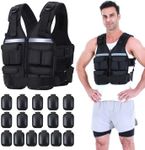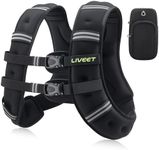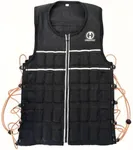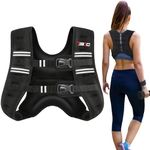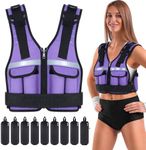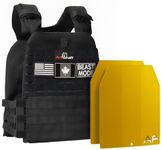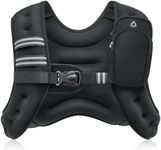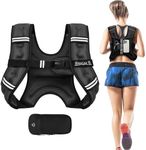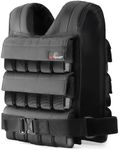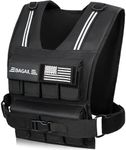Buying Guide for the Best Weighted Vests
Choosing the right weighted vest can make a big difference in your workouts, whether you're running, doing bodyweight exercises, or just looking to add some resistance to your daily routine. The key is to find a vest that fits comfortably, matches your fitness goals, and is easy to use. Before buying, think about how you plan to use the vest and what features will help you get the most out of your training.Weight CapacityWeight capacity refers to the maximum amount of weight the vest can hold. This is important because it determines how much resistance you can add to your workouts. Vests come in a range of capacities, from as little as 5 pounds to over 50 pounds. Lighter vests (5-15 lbs) are great for beginners or for activities like running and walking, where too much weight can affect your form. Medium weights (15-30 lbs) are suitable for more intense bodyweight exercises or for people with some training experience. Heavier vests (30+ lbs) are best for advanced users looking to significantly increase resistance. Choose a weight that challenges you but still allows you to maintain good form and complete your workouts safely.
AdjustabilityAdjustability means how easily you can change the amount of weight in the vest. Some vests have fixed weights, while others let you add or remove weight in small increments. Adjustable vests are more versatile because you can start light and increase the weight as you get stronger. If you want a vest that grows with your fitness level or can be used for different types of workouts, look for one with adjustable weights. If you only need a specific weight for a certain activity, a fixed-weight vest might be simpler and more comfortable.
Fit and ComfortFit and comfort are about how the vest sits on your body and how it feels during movement. A good vest should fit snugly without bouncing or shifting, and it should not restrict your breathing or movement. Look for features like adjustable straps, padded shoulders, and breathable materials. If you plan to wear the vest for long periods or during high-intensity workouts, comfort becomes even more important. Try to choose a vest that matches your body shape and size, and consider how easy it is to put on and take off.
Material and DurabilityMaterial and durability refer to what the vest is made of and how well it holds up over time. Most vests are made from nylon, polyester, or other tough fabrics that can handle sweat and repeated use. Reinforced stitching and high-quality fasteners add to the vest's lifespan. If you plan to use the vest outdoors or for intense workouts, choose one with durable, easy-to-clean materials. A well-made vest will last longer and provide better value in the long run.
Weight DistributionWeight distribution is about how evenly the weight is spread across the vest. Even distribution helps prevent discomfort and reduces the risk of injury. Some vests have weights spread out over the chest and back, while others concentrate weight in certain areas. For most users, a vest with balanced weight distribution is best, as it feels more natural and doesn't throw off your balance. If you have specific training needs, like focusing on upper or lower body, you might look for a vest designed for that purpose.
